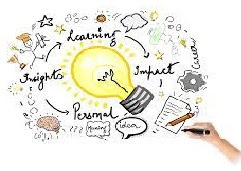What is your dominant influencing style?

Let us understand more about the influencing Style or method
We must know our influence style when dealing with others and in different situations.
Influencing Style will have an impact on the RESULT.
Typically we will be using the following influencing Style.
- Commanding (using authority/ dictating/ directing)
- Rationalizing ( using logic/data to convince)
- Engaging ( involving others /collaboration)
- Inspiring (energizing others with aspirations/values)
- Balancing-finding middle path ( win-win, alternate solution seeking)
Why do we need to be aware of our influencing Style?
Style determines the outcome or result.
Style decides our tone and expression.
For example,
Imagine a situation in the workplace; as a business head, you need to solve quality issues raised by customers. You have to solve them along with your core team member.
Here the outcome is solving the problem. The solution's speed and quality depend on the influencing Style you choose.
You may use any of the following statements depending upon your influencing Style, which will have a different tone and interpretation from others.
"I want you to explain to me the reason for the quality problem" (commanding)
"Can you explain the reason for product failure for my understanding and let us find a solution" (Engaging)
"I don't want a reason to hear. solve the problem first" (commanding)
"Why don't you solve the problem ?" ( commanding)
"I think we can solve the problem easily. Let us discuss." (inspiring and engaging)
"5% rejection seems high, and let us resolve this by this week".(rational and inspiring)
We may use a different statement for the same situation that conveys a different tone.
What would be the outcome?
It now depends on the other person's influencing type with reference to the situation and how they interpret the statement and underlying tone.
The key point to learn is that we need to be aware of our influencing Style and use different influencing types depending on the situation and the other person.
Highly effective people usually use engaging and inspiring types except in urgent and sensitive problems.
Just reflect your dominant influencing Style.
Have a great week ahead.




 )
)
 ).
).